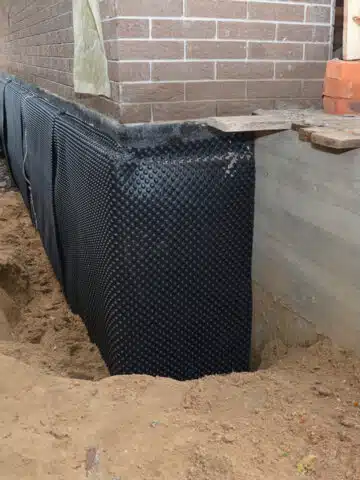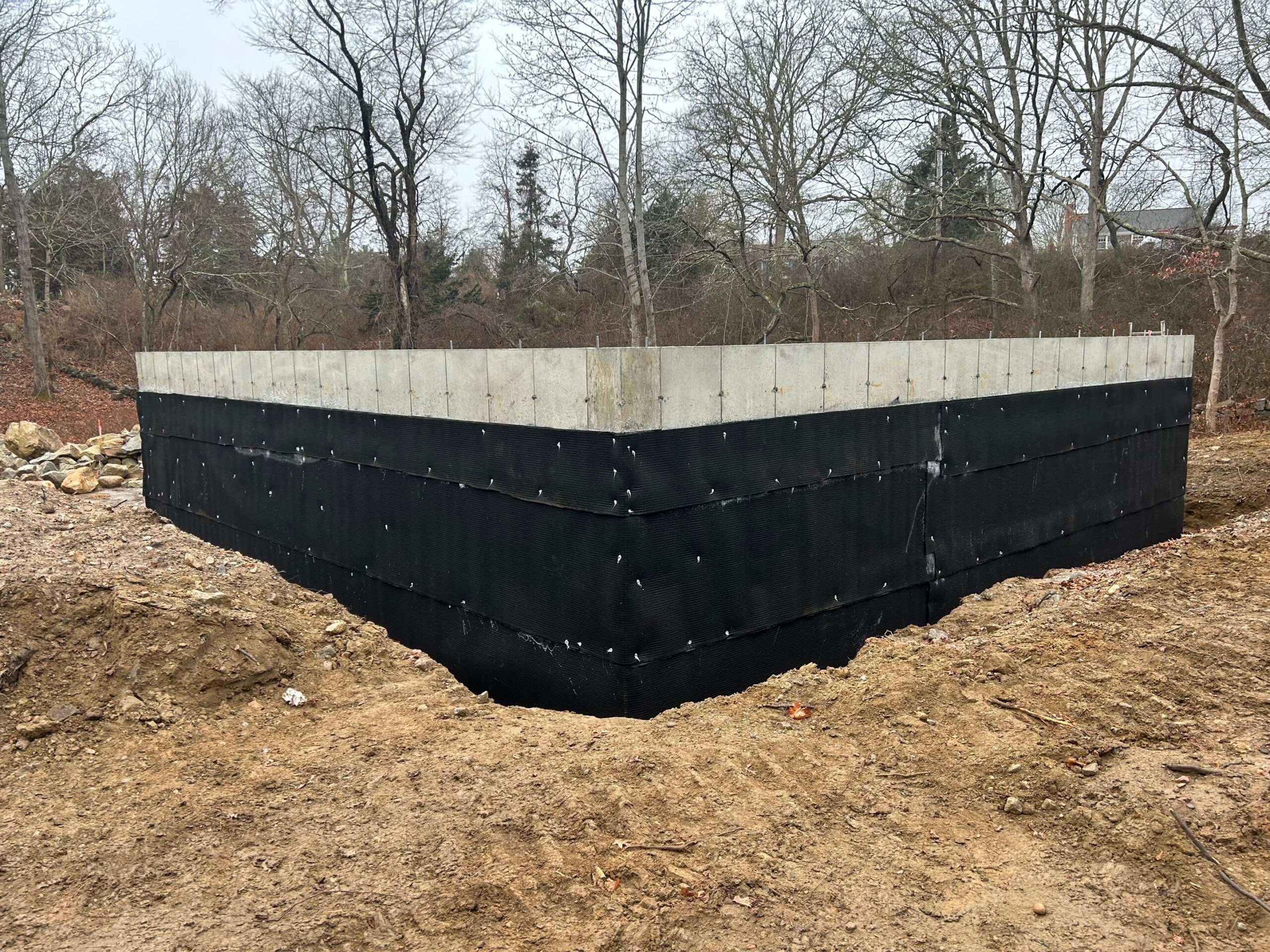Checking Out the Different Strategies and Solutions for Effective Damp Proofing
Wetness in buildings poses significant challenges to both architectural honesty and interior air quality. Various methods and services have actually emerged to fight this pervasive issue. From typical damp-proof membrane layers to innovative chemical treatments, each technique offers one-of-a-kind advantages. Comprehending these alternatives is vital for effective wetness control. Nonetheless, picking the appropriate option depends upon details building problems and requirements, triggering additional exploration right into one of the most effective moist proofing approaches readily available.
Recognizing the Reasons For Wetness
Wetness can emerge from different sources, recognizing these reasons is essential for effective removal. Frequently, dampness stems from three primary resources: climbing wet, penetrating moist, and condensation. Climbing wet takes place when groundwater takes a trip upwards with porous products, such as block or rock, often due to an absence of a reliable barrier (damp proofing newcastle). Passing through damp is typically brought on by outside elements, consisting of roof covering leakages, damaged rain gutters, or damaged wall surfaces, enabling water to penetrate a residential property. Condensation, on the various other hand, arises from excess wetness airborne, frequently worsened by inadequate ventilation and temperature level distinctions, leading to water droplets basing on surfaces. Determining these underlying issues is important, as each kind of dampness requires a tailored method for remediation. Appropriate assessment assists in determining one of the most effective solutions, inevitably guarding the structural honesty of a structure and enhancing interior air high quality
Standard Damp-Proof Membranes

Chemical Damp-Proofing Solutions
Chemical damp-proofing services use a cutting-edge method to avoid wetness breach in structures. These methods usually include the application of fluid chemicals that pass through stonework and create an obstacle against rising damp. Frequently made use of chemicals consist of silanes, siloxanes, and various other water-repellent representatives that respond with surface products to create a hydrophobic layer.The application procedure generally calls for drilling openings into the wall surfaces, injecting the chemical remedy, and enabling it to cure. This method is particularly useful for older frameworks where conventional damp-proof membrane layers may be unwise. Moreover, chemical damp-proofing can be much less disruptive and much more cost-effective than comprehensive improvement projects.While effective, these remedies rely on proper application and ecological conditions for peak efficiency. Regular maintenance and surveillance are necessary to assure the long life of the damp-proofing treatment. In general, chemical damp-proofing represents a versatile option for securing buildings versus moisture-related damages
Cavity Wall Construction Strategies
Dental caries wall surface building strategies provide numerous benefits, especially in wetness control and power efficiency. By integrating an air gap in between 2 layers of stonework, these wall surfaces efficiently alleviate water access while improving insulation. This combination not only protects frameworks from wetness yet likewise adds to reduced energy consumption.
Benefits of Dental Caries Walls
When thinking about reliable wet proofing methods, the advantages of dental caries walls attract attention plainly. Tooth cavity wall surfaces contain two separate layers, creating an air void that effectively decreases wetness infiltration. This design minimizes the threat of dampness, as the external wall surface acts as an obstacle versus rain and water access. Additionally, cavity wall surfaces enhance thermal insulation, which adds to energy performance by lowering warmth loss. They likewise supply sound insulation, aiding to develop a quieter interior environment. The air space allows for ventilation, which assists in dampness control and reduces the likelihood of mold and mildew growth. These advantages not just enhance the overall convenience of a building yet likewise contribute to its longevity and architectural honesty.
Wetness Control Techniques
Efficient moisture control approaches are vital in dental caries wall building and construction to assure lasting protection versus moisture. One primary method involves the unification of weep holes, which assist in water drain from the cavity, avoiding build-up. In addition, using breathable membrane layers can aid handle moisture degrees while allowing trapped vapor to run away. Proper positioning of insulation is additionally crucial, as it must not block water drainage courses. Guaranteeing that the external leaves of the cavity wall are built with water-resistant materials enhances overall longevity. Normal upkeep checks are vital to identify any obstructions or damages early, safeguarding the framework's integrity. Ultimately, a mix of these methods forms a robust defense versus wetness breach in tooth cavity wall surfaces.
Insulation and Power Performance
Insulation plays an important function in boosting power efficiency within dental caries wall surface building and construction. By including insulating materials, these walls develop a thermal obstacle that decreases warm loss and lowers power usage. Efficient insulation not just assists preserve a steady interior temperature but additionally reduces the risk of wetness, as it avoids condensation within the wall surface cavity. Numerous techniques, such as making use of inflexible foam boards or mineral woollen, can be used to attain suitable insulation efficiency. Furthermore, correct installment is important to guarantee that voids and voids are decreased, which can or else endanger power efficiency. Inevitably, a well-insulated dental caries wall adds greatly to general sustainability and lowers heating and cooling prices for home owners.
External Damp Proofing Techniques
Outside damp proofing techniques are vital for shielding structures from wetness seepage. 2 efficient methods include the application of water-proof membrane layers and the installation of French drains pipes. These remedies aid minimize water accumulation and protect the stability of buildings.
Waterproof Membrane Layer Application
While numerous approaches exist for avoiding wetness ingress, the application of water-proof membrane layers stays a highly effective external damp proofing method. These membrane layers are typically made from materials such as polyethylene, rubber, or changed bitumen, giving a durable obstacle against water penetration. The installment procedure involves applying the membrane to the outside surfaces of foundations or walls, making sure total coverage to stop leaks. Appropriate bond and securing at joints are important to making the most of effectiveness. Water-proof membranes can be applied in various types, including liquid coverings and sheet membranes, enabling adaptability based on the details needs of the structure. This method not just safeguards buildings from dampness however additionally enhances their longevity and structural integrity.
French Drainpipe Setup
One reliable approach for taking care of groundwater and stopping moisture buildup around a building's foundation is the setup of a French drain. This drainage system is composed of a trench loaded with gravel and a perforated pipeline that reroutes surface water away from the foundation. Appropriate setup requires cautious planning, making sure that the drainpipe inclines far from the framework to help with ideal water flow. Additionally, the place of the drainpipe is crucial; it must be placed in areas susceptible to pooling or excess wetness. Regular maintenance, consisting of clearing particles from the crushed rock and making certain the pipeline continues to be unobstructed, is important for lasting efficiency. Eventually, a well-installed French drainpipe can greatly minimize the danger of water-related concerns in foundations and basements.
Interior Waterproofing Methods
Inside waterproofing techniques are vital for shielding a building's interior from dampness seepage and prospective water damage. These approaches typically entail the application of specific materials and strategies made to create a moisture barrier within the structure. One usual strategy is using water resistant coverings or sealers on wall surfaces and floors, which stop dampness from permeating surfaces.Additionally, mounting interior water drainage systems, such as sump pumps, can properly manage water buildup in cellars and crawl rooms. Another method entails the usage of vapor barriers, which are installed to prevent wetness activity from the ground into living spaces.Moreover, attending to any splits or voids in walls or foundations with suitable sealants assures a comprehensive protection versus water invasion. By carrying out these interior waterproofing approaches, homeowner can substantially lower the danger of mold and mildew development, structural damage, and other moisture-related issues. Appropriate implementation of these techniques is essential for long-term protection and building integrity.
Regular Upkeep and Evaluation Practices
Routine upkeep and examination techniques are vital for guaranteeing the long-term effectiveness of moist proofing services in any kind of structure. Routine checks make it possible for building proprietors to determine early signs of moisture intrusion, such as peeling off paint, mold and mildew growth, and moldy smells. These indicators can signify underlying concerns that call for prompt attention.Inspections ought to be conducted at the very least each year, concentrating on at risk locations like basements, creep rooms, and exterior walls. During these evaluations, homeowner need to take a look at sealers, drain systems, and air flow to confirm they work correctly.Additionally, keeping seamless gutters and downspouts is crucial, as clogged up systems can result in water buildup near the foundation. Applying a normal maintenance timetable, together with prompt repair work, can considerably prolong the life-span of moist proofing actions and safeguard the architectural honesty of the building. Aggressive actions eventually contribute to the general health and security of the living environment.
Regularly Asked Questions
The Length Of Time Does Damp Proofing Typically Last?
The period of moist proofing performance varies, normally lasting between 20 to 50 years. Variables such as application quality, environmental problems, and maintenance methods considerably influence the durability of the damp proofing therapy.

Can I Damp Proof My Home Myself?
The specific considered the feasibility of do it yourself damp proofing. With proper study and the best products, it is possible. They also identified the value of professional advice to ensure lasting effectiveness and protect against future concerns.
What Are the Signs of Ineffective Damp Proofing?
Indications of ineffective wet proofing include persistent moldy smells, noticeable mold development, peeling paint, wet patches on wall surfaces, and wood degeneration - damp removal newcastle. Home owners ought to address these concerns quickly to avoid more damage and wellness issues
Does Damp Proofing Affect Indoor Air Top Quality?

Exactly How Much Does Specialist Damp Proofing Expense?
Professional wet proofing expenses vary considerably, typically varying from $1,000 to $5,000 depending on the property's dimension, the degree of the damp problem, and chosen approaches. Each circumstance needs a tailored assessment for accurate rates. Frequently, moisture originates from 3 main resources: increasing wet, permeating wet, and condensation. When taking into consideration efficient damp proofing methods, the advantages of dental caries walls stand out prominently. Exterior damp proofing techniques are crucial for safeguarding frameworks from dampness seepage. While numerous techniques exist for protecting against moisture access, the application of waterproof membrane layers continues to be an extremely effective outside moist proofing strategy. Indicators of inadequate moist proofing consist of relentless moldy smells, visible mold development, peeling paint, moist spots on wall surfaces, and timber decay.